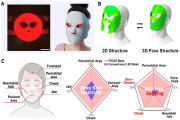LiDAR is considered to be the key technology for self-propelled vehicles. Frequency Modulated Continuous Wave (FMCW) LIDAR - a cumbersome abbreviation for a disruptive technology - will facilitate the breakthrough in autonomous driving and, according to experts, will completely force the currently used Time of Light (TOF) LIDAR systems out of the market.
Scantinel Photonics, a venture company supported by ZEISS Ventures, is a FMCW LiDAR expert in Europe. FMCW RADAR is already being offered as a standard driver assistance system in the automotive industry. In contrast to radar, FMCW LiDAR does not use radio waves but light in the form of lasers, thus enabling better image resolution and improved detection of objects, such as pedestrians and cyclists.
This FMCW LiDAR technology has advantages over conventional methods including a view range of over 250 meters even under bad weather conditions or direct sunlight. It immunes to sensor cross-talk and self-interference. Light impulses from other sensors cannot be confused or disturbed by own, previously sent impulses. Also, it features simultaneous measurement of distance and speed in each data point and thus reduced computing effort and system cost.
One of the reasons why FMCW LIDAR technology is powerful is that the sensors used can detect the smallest possible amount of light - a photon. Scantinel's FMCW LiDAR operates in the wavelength range of 1550 nm, thus the laser meets the required high standards of eye safety. In addition, it can provide accurate measurement results even under limited visibility conditions, for example in fog, rain or snowfall.
Scantinel also uses a beam deflection system that does not require any mechanical components, such as MEMS.

(Live test with Scantinel demonstrator; image: Scantinel Photonics)
Article provided by Dr. Michael Richter; Scantinal Photonics





 CN
TW
EN
CN
TW
EN






